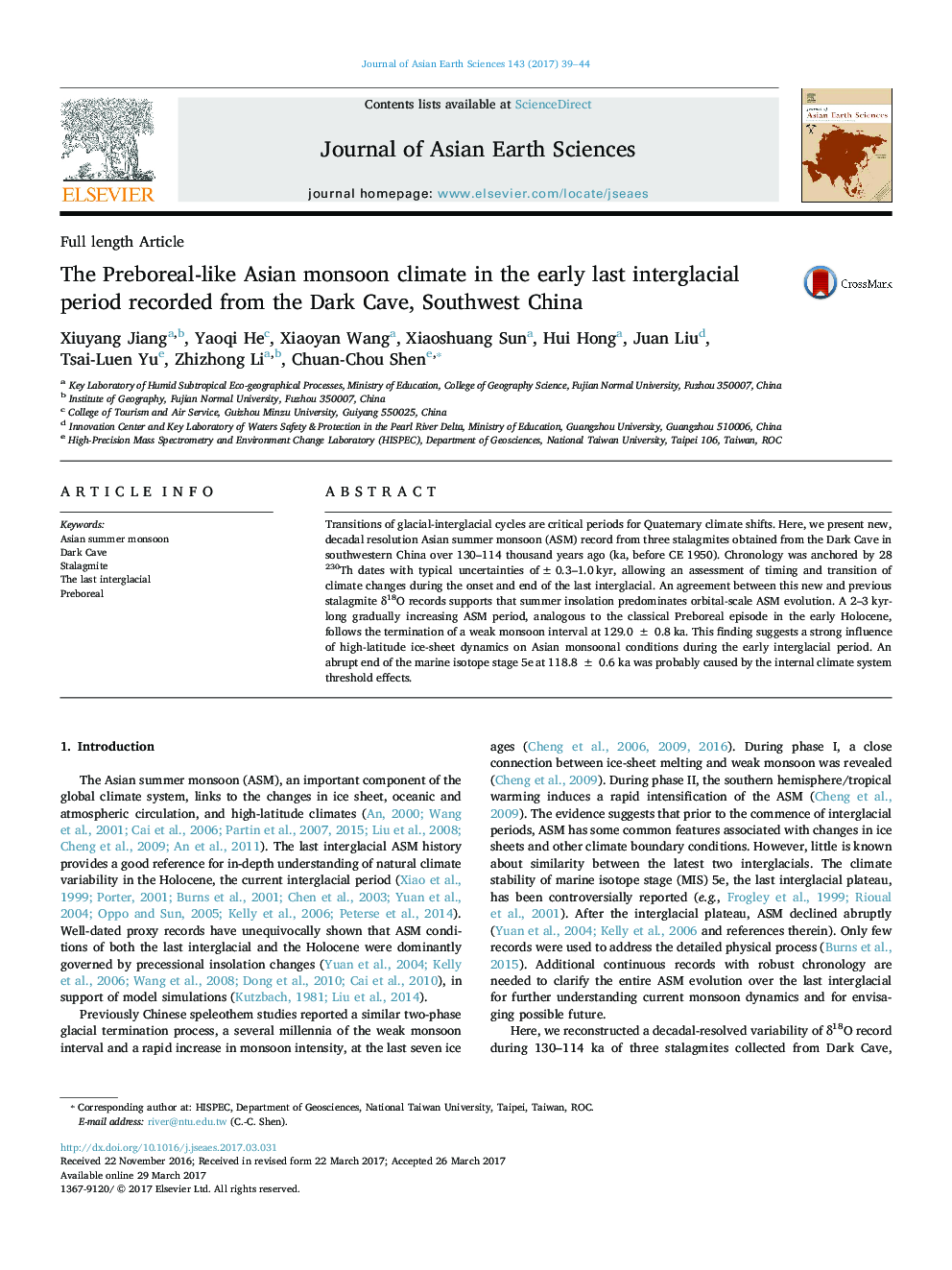| Article ID | Journal | Published Year | Pages | File Type |
|---|---|---|---|---|
| 5785998 | Journal of Asian Earth Sciences | 2017 | 6 Pages |
â¢A record of multidecadally resolved Asian monsoon variability between 130 and 114 ka.â¢The Preboreal-like Asian monsoon climate in the early last interglacial period.â¢An abrupt ending of the MIS 5e within 300 year at 118.8 ka.
Transitions of glacial-interglacial cycles are critical periods for Quaternary climate shifts. Here, we present new, decadal resolution Asian summer monsoon (ASM) record from three stalagmites obtained from the Dark Cave in southwestern China over 130-114 thousand years ago (ka, before CE 1950). Chronology was anchored by 28 230Th dates with typical uncertainties of ±0.3-1.0 kyr, allowing an assessment of timing and transition of climate changes during the onset and end of the last interglacial. An agreement between this new and previous stalagmite δ18O records supports that summer insolation predominates orbital-scale ASM evolution. A 2-3 kyr-long gradually increasing ASM period, analogous to the classical Preboreal episode in the early Holocene, follows the termination of a weak monsoon interval at 129.0 ± 0.8 ka. This finding suggests a strong influence of high-latitude ice-sheet dynamics on Asian monsoonal conditions during the early interglacial period. An abrupt end of the marine isotope stage 5e at 118.8 ± 0.6 ka was probably caused by the internal climate system threshold effects.
Graphical abstractDownload high-res image (42KB)Download full-size image
